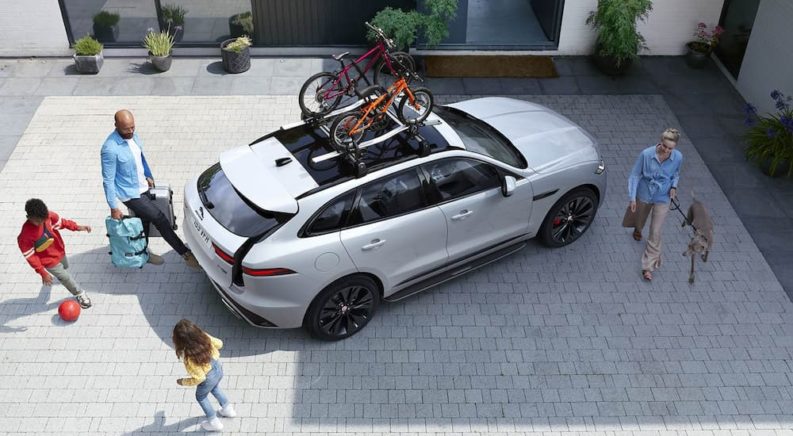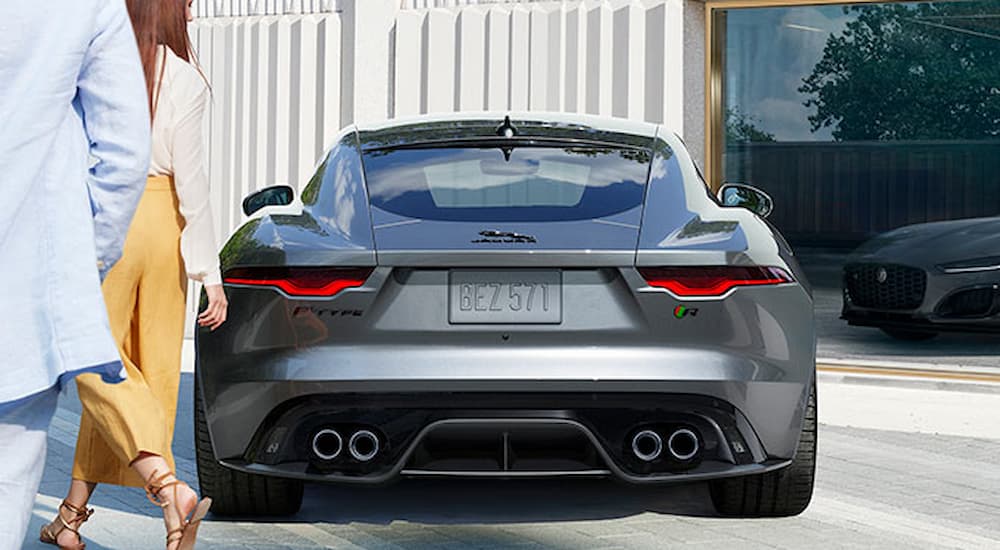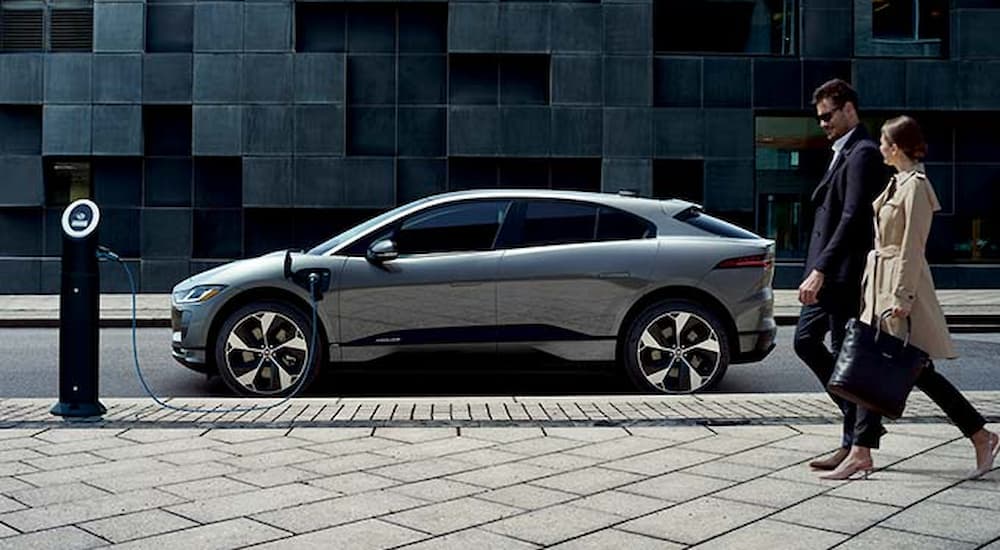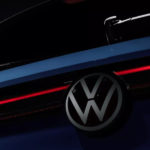They’ve been around since 1935. They functionally owned Le Mans for nearly a decade and crafted what is widely regarded as one of the most beautiful cars of all time before slipping into obscurity due to ineffective state-sponsored management. Their return to private independence in the early 1980s is a glowing capitalist success story, with a market share that has quadrupled in the decades since despite several changes of ownership, and today they’ve committed to the full electrification of their lineup while continuing to deliver a sublime combination of performance and luxury. With such a resume, you’ve surely assumed I’m talking about one of Britain’s many esteemed automotive firms––each of their histories seems to follow this model, don’t they?––and you would be absolutely right!
Today, we are taking an introductory look at Jaguar. Back in the day, founder Sir William Lyons’ mission was to deliver a high-value product––something that over-delivered on performance, style, and luxury for its price point, not to be confused with an economy car. This may be why Jaguar never ascended the ladder to hyper-exclusive status like other brands with similar pedigrees, such as Bentley. Nonetheless, Jaguar competes with Germany and America’s best today and is well-positioned to do so tomorrow with their commitment to electric powertrains, in part thanks to their participation in Formula E racing!
The Legend Begins on the Track
Jaguar was well-established before its first race car came about. The Swallow Sidecar company’s Jaguar 2.6L Saloon was the first model to bear the name in 1935; the negative connotations which became attached to the SS shorthand led the company to adopt the name of its most distinctive product after WWII. Designed shortly afterward, the sensational XK120 was the fastest production car in the world at the time, and among the most beautiful, too––then Jaguar turned to Malcolm Sayer and William Heynes to turn it into a race car.
So the legend doesn’t exactly begin on the track, but Jaguar’s establishment in the United States correlates almost directly to the 1951 release of the C-Type racer. While the car’s connection to the XK120 is clear, its purpose is obviously quite different. Nary an edge can be spotted amongst the aerodynamic curves of the bonnet (British for “hood”) and fenders. The car also shed 25% of its mass and incorporated disc brakes, which was a massive technological advancement for the time and a major development in terms of durability for use in racing.
This led the C-Type to win the 24 Hours of Le Mans in its very first entry (1951) and 1953. 1953 was a proud year in particular. After two of the four cars failed to finish the 1951 race, and all three entries overheated early into the 1952 race due to insufficient cooling to handle last-minute power increases, in the 1953 race, all four Jaguar C-Types finished in the top 10, taking 1st, 2nd, 4th and 9th!
1954 introduced the D-Type to the world, taking all the ideas behind the C-Type a full step further. It featured the first monocoque construction to be used in racing, an iconic fin behind the driver, and fender flares that were familiar from the C-Type but had been fully reimagined in a wind tunnel. The engine––Jaguar’s legendary XK inline-6 with twin overhead cams, which would persist in various forms until the 1990s––was essentially unchanged; after all, why spoil a good thing?
The D-Type’s rookie run at Le Mans had it finish a close 2nd, one lap behind the winning Ferrari, but it was only getting started. Jaguar wrote its name in history as the most dominant racing moniker of the era when the D-Type won in 1955 and 1956 before sweeping 1st through 4th (and also taking 6th) with no DNFs in 1957. While Jaguar never again ascended to this level of racing success, their well-earned reputation was firmly established.
From Racing Superstar to Fashion Icon
The vehicle to follow the D-Type was naturally named the E-Type––you might have heard of it. The Jaguar E-Type is more of an icon than a legend, sold as a production car rather than produced strictly for racing. At its Geneva debut––where it arrived following an 11-hour, 750-mile journey from the factory in Coventry, a fine publicity stunt to demonstrate the grand touring nature of the car––Jaguar took twice as many pre-orders as was hoped for! A note for the curious: Google says that’s an over 12-hour drive on today’s roads.
The well-established XK engine gave it excellent performance credibility, and it developed upon the D-Type’s wonderful body lines, with a posture bearing a genuine resemblance to the brand’s namesake. Despite this pedigree, production numbers in the tens of thousands made it relatively accessible for a car that belonged on a poster, delivering on Jaguar’s mission of building high-value automobiles.
Fashion designer-turned-car collector Magnus Walker said the E-Type was like poetry in motion: “The best cars, like the E-Type, perfectly capture a specific cultural moment and communicate it beautifully and timelessly to future generations.” It is likely no coincidence that US Jaguar sales took a nosedive after the E-Type’s 14-year run came to an end; it was a perfect manifestation of the British Invasion in automotive form. Earning top honors from Sports Car International and The Daily Telegraph as the best sports car of the ’60s and most beautiful car of all time, respectively, even Enzo Ferrari is said to have praised it as such, and today it remains the halo car to which all modern Jaguars might aspire.
The brand must be aiming in the right direction, then, since three modern products have earned recognition from the World Car Awards: the F-Type in 2013 for Design of the Year, F-Pace in 2017 for Design of the Year and Car of the Year, and I-Pace in 2019 for Design of the Year, Green Car of the Year, and Car of the Year––the only WCA triple crown to date!
The F-Type
The 40-year gap between the E-Type and F-Type was essentially filled by the XJ-S, XK8, and XK. The 2013 arrival of the new roadster was a clear closure of the loop, with a long bonnet, a wide, gaping grille, and subtle yet distinctive body lines on the bonnet and fenders accompanying an attitude that makes no further attempts at subtlety. As Director of Design Ian Callum put it, the design is true to Jaguar’s DNA: “Powerful, dramatic and just that 10% different from everyone else on the road.” The F-Type perhaps best embodies Jaguar’s modern foray into luxury muscle car territory––with some of the most accessible prices of any major British manufacturer, today it has style and performance figures to line up against the Porsche 911, but top-line models with supercharged engines draw character comparisons to the Challenger Hellcat with some of the best exhaust tones in the industry.
The F-Pace
Under the pressure of the modern market, automotive manufacturers have had to produce crossovers and SUVs to survive. Jaguar submitted their successful bid to evolve in 2016 with the SUV conversion of the F-Type known as the F-Pace. Bearing essentially the same design language and performance elements of the F-Type in SUV form, it’s no wonder that it surpassed its namesake with a double crown award in 2017. It even carries the personality successfully––YouTubers The Straight Pipes got to test drive an SVR version that they called “the best exhaust note of 2021”, drawing favorable comparisons to the Hellcat powertrain of the Jeep Grand Cherokee Trackhawk and demonstrating substantially more personality than its uber-distilled German counterparts.
The I-Pace
Sending nearly 400 hp from an all-electric powertrain with 222 miles of range, with F-Type looks and crossover practicality at a starting price of around $70,000, is it any wonder that the I-Pace became the World Car Awards’ only triple crown winner for Green Car of the Year, Design of the Year, and Car of the Year? Representing the beginning of a dramatic shift in Jaguar design, the I-Pace might not have an incredible exhaust note, but it seeks to preserve the ideal that a Jaguar should be the maximum value proposition for drivers in a changing world. It just might be the XK120 of tomorrow.
Pouncing on the Future
We all know that EV powertrains are coming on strong, with most major OEMs around the world announcing massive investments in sustainable operation, the bulk of which is naturally being made in the electrification of their lineups. Jaguar is no exception, with the I-Pace being merely the second step on a roadmap that reaches zero emissions by 2039 and zero tailpipe emissions by 2036.
The first step was taken when Jaguar entered Formula E in 2016 to revisit the tried-and-true formula of using developments on the track to make developments for the road. They haven’t quite recaptured the racing dominance of the 1950s––achieving their first two wins across the 2019 and 2020 seasons––but with numerous podiums and two more wins in 2021, the team finished second overall, showing promise for their development as an electric brand.
That’s important because the 2019 I-Pace is the last all-new Jaguar we’re going to see before 2025––at which point the entire lineup will be fully electric! According to Forbes, Jaguar is the largest legacy OEM to commit to electric cars; the dramatic pause on new releases until the entire brand is reinvented may provide some indication as to why it’s such a bold step to take. The current plan is to base all Jaguar models on a single platform that is distinct to their brand and hopefully continues Jaguar’s classic design language of long, rear-slung cruisers––a tradition that Chief Creative Officer Gerry McGovern hinted would be honored by eschewing the “cab-forward” styling that is common of practicality-minded EVs.
Another Bold Leap Forward
Imagine an EV with proper front-mid-engine V12 architecture! While the primal delight inspired by Jaguar’s supercharged V8s will be missed, it seems we can at least look forward to a future where Jaguars still look like Jaguars––that is to say, performance-oriented luxury vehicles that look just a touch wilder than the German competition, while being orders of magnitude more refined than the Americans. While only time will tell how the execution of this massive change plays out, and we have a while to wait to see it happen, it seems that Sir William Lyons’ motivation to provide the maximum value to customers through beautiful design, competitive performance, admirable quality, and accessible pricing will continue to drive Jaguar in the future, no matter what kind of motor is under the bonnet.






